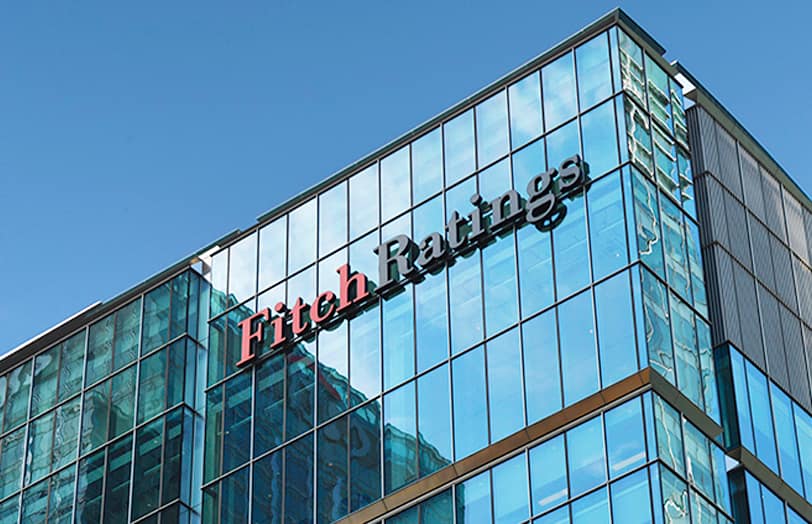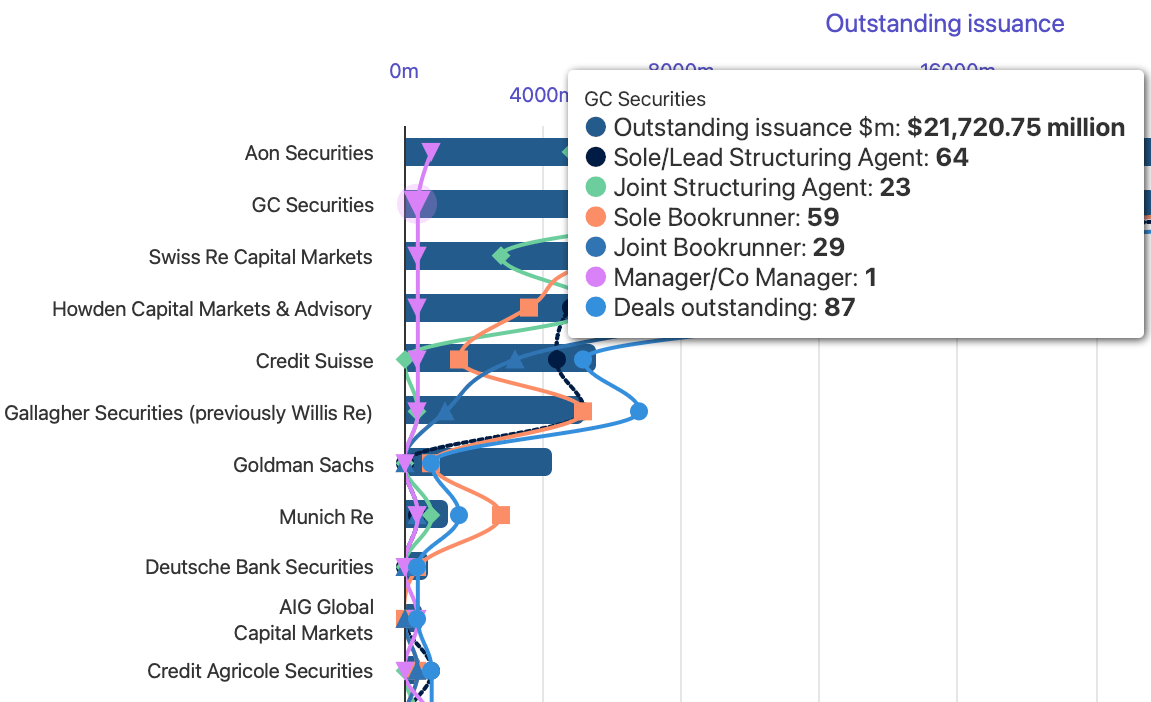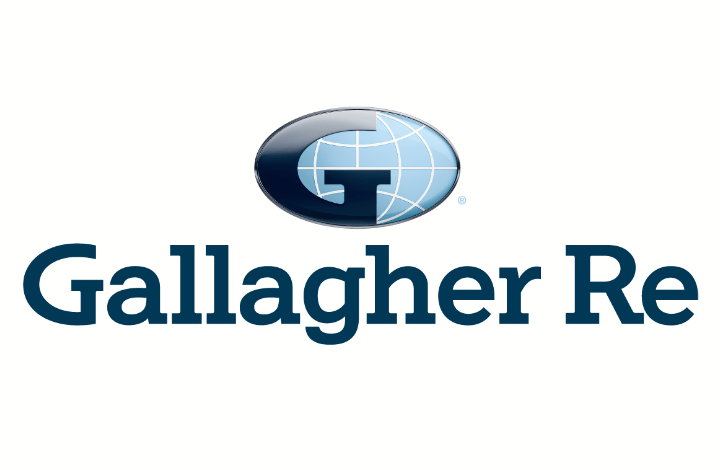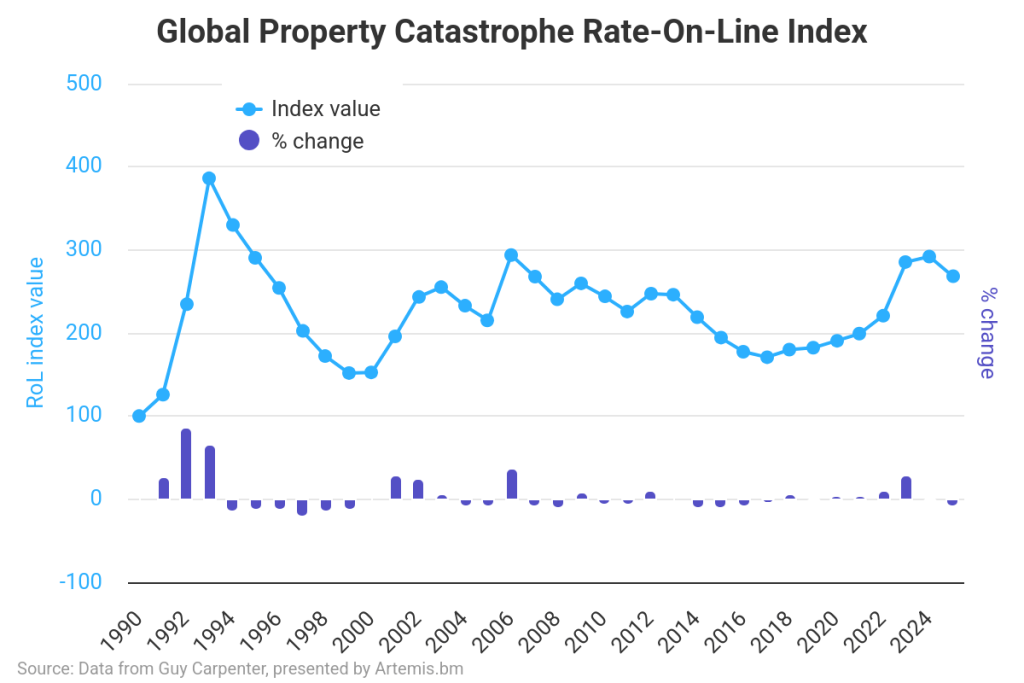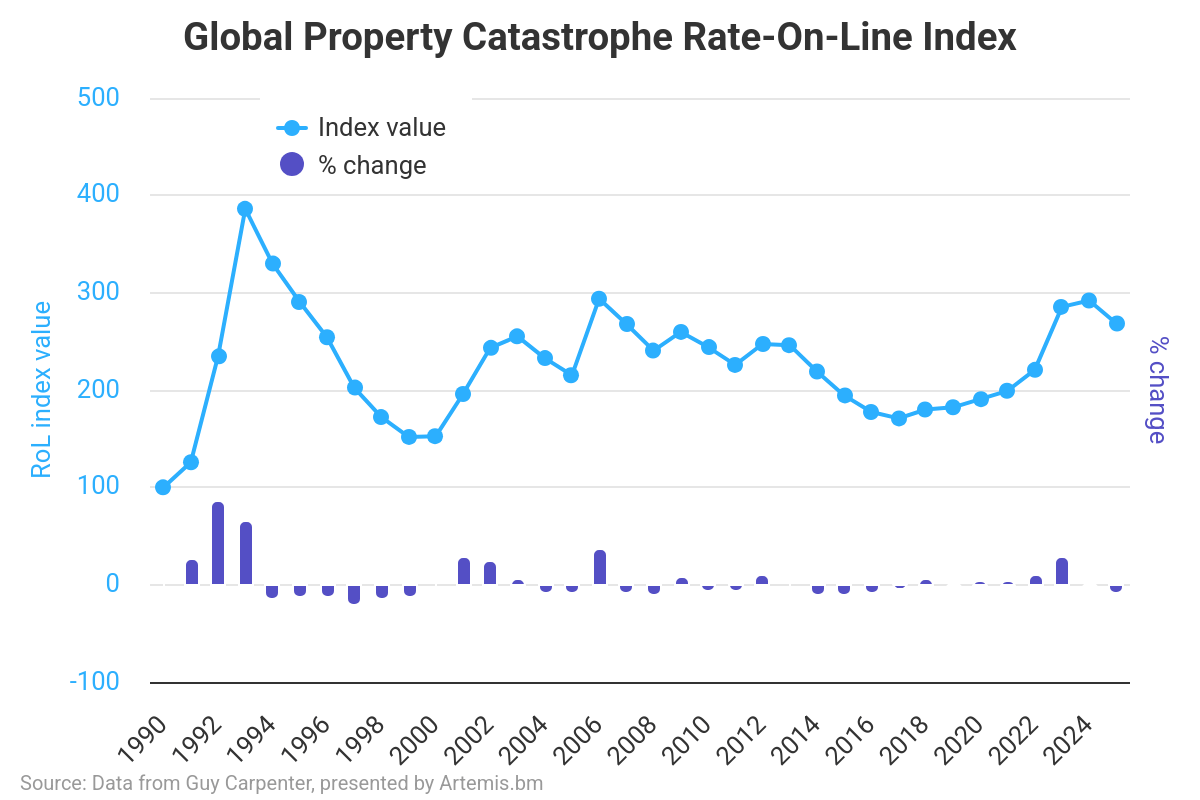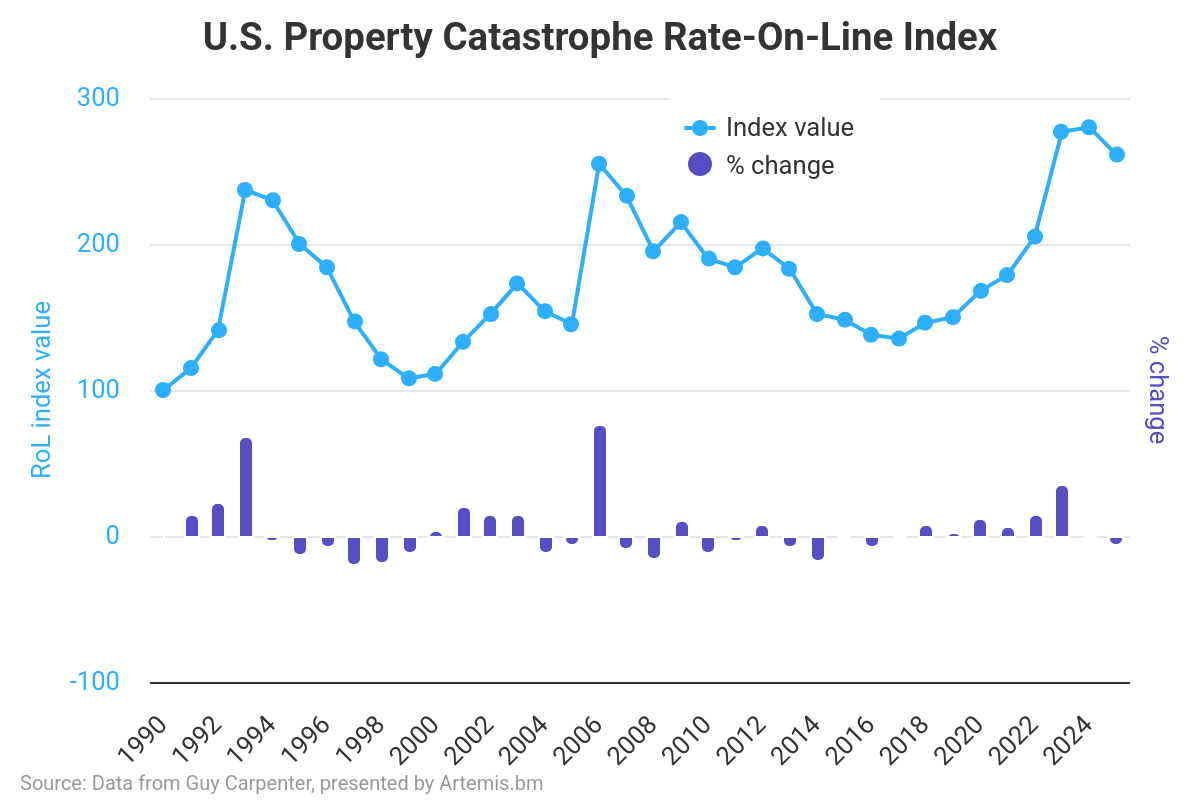This content is copyright to www.artemis.bm and should not appear anywhere else, or an infringement has occurred.
Despite catastrophe bond risk spreads having tightened and reinsurance rates being expected to decline at the renewals, specialist insurance-linked securities manager Twelve Securis says the relative value of the ILS asset class remains compelling for investors with structural improvements set to persist.
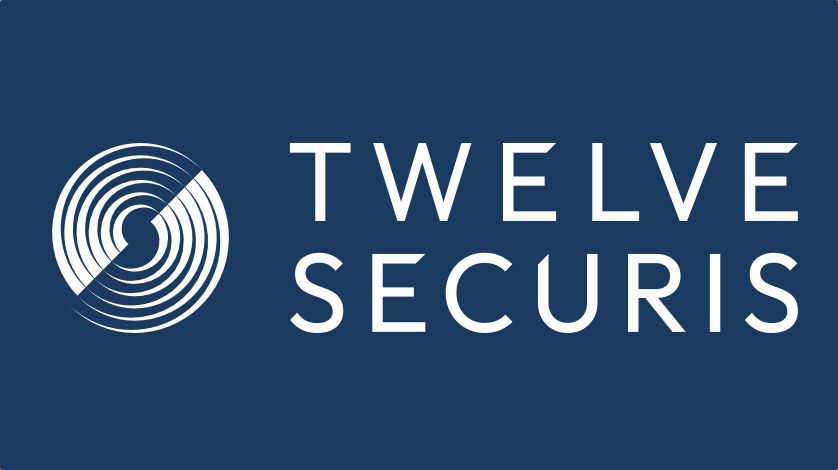 The trend of spread tightening in the catastrophe bond market has been reinforced by strong demand for the asset class, as well as the lack of losses faced, the investment manager explained in a new thought-leadership piece.
The trend of spread tightening in the catastrophe bond market has been reinforced by strong demand for the asset class, as well as the lack of losses faced, the investment manager explained in a new thought-leadership piece.
This spread environment, driven by seasonal and structural factors, has served to make the cost of risk capital and reinsurance protection cheaper for cat bond sponsors, which has been helping to drive the significant issuance levels seen this year.
Twelve Securis explained, “The cat bond market remains inherently cyclical. Periods of tightening markets often attract opportunistic issuers, while elevated spreads can moderate supply. Although reinsurance capacity has deepened and competition has increased, overall conditions still support robust issuance activity.
“This tightening has also encouraged the entry of new or non-traditional issuers, including corporates exploring risk transfer solutions for climate-related exposures. While the market remains dominated by U.S. hurricane and earthquake risks, we are seeing gradual broadening into secondary perils such as wildfires and severe convective storms as well as continued participation from European sponsors.
“Parametric structures remain an important innovation area, yet indemnity triggers continue to dominate due to their lower basis risk and closer alignment with traditional reinsurance mechanisms.
“Looking ahead, we expect that continued heavy primary issuance could introduce a stabilising effect on spreads. As more risk enters the market, investors will have greater ability to differentiate and allocate selectively, fostering equilibrium between pricing and demand.”
Twelve Securis forecasts that issuance levels should remain robust, and that “market sentiment suggests the trend will continue into the foreseeable future.”
Cat bonds remain an attractive asset class for investors, comparing well with other asset classes, the ILS manager notes.
“Despite the compression, relative value remains attractive, particularly versus corporate credit and high-yield markets.
“Cat bonds continue to offer an appealing premium, alongside diversification and low correlation benefits in a volatile macro environment,” Twelve Securis wrote.
Summing up on cat bonds the manager further stated, “The cat bond market remains a fundamentally healthy and expanding asset class. It offers meaningful spreads, strong underlying discipline, and low correlation to broader financial markets, all attributes that continue to underpin its role as a strategic diversifier. In an environment marked by geopolitical tension, inflation volatility, and overvaluation in traditional markets, cat bonds stand out as a resilient and attractive investment opportunity poised for further growth through 2026.”
Turning to private insurance-linked securities, the opportunities that see private reinsurance and retrocession structured into investment funds and opportunities for allocators, here Twelve Securis sees conditions also remaining attractive for investors.
With the 2026 renewals in sight, Twelve Securis expects to see, “a market entering a more balanced phase following two years of strong underwriting performance.”
“Leading into January 2026, in our view capacity will be marginally higher year-on-year, introducing some pricing pressure,” Twelve Securis forecasts.
Adding, “We expect moderate rate reductions in the upcoming renewal cycle, particularly in remote catastrophe layers where competition from the cat bond market is most pronounced. Across the broader market, pricing is likely to decline more gently, continuing the gradual correction from the post-2023 highs. The private reinsurance market remains more constrained in supply relative to capital markets, which should limit the extent of price softening.”
Despite the expectation of price softening, Twelve Securis goes on to say that, “Investor sentiment remains constructive,” on ILS opportunities.
“Cat bond spreads have tightened, yet the relative value of reinsurance risk remains compelling compared to traditional credit markets. Private ILS investors, having experienced resilient performance through recent events such as Hurricane Ian and the 2025 wildfires, retain confidence in the structural robustness and alignment of interest within the ILS framework,” Twelve Securis adds.
Also highlighting that, “We are observing selective capital rotation from cat bonds into private reinsurance strategies which is an indication of continued institutional engagement rather than new speculative inflows.”
Importantly though, when it comes to the January 2026 reinsurance renewals, Twelve Securis is expecting discipline to remain firm on important contract structural features such as attachment points.
In fact, the investment manager is anticipating discipline will be maintained on many of the important changes and updates that the ILS market has introduced over the last few years.
The investment manager wrote, “The defining feature of the 2026 renewals will be the negotiation around attachment points and coverage breadth. While buyers may seek broader protection, particularly for secondary perils such as wildfire, discipline across the market remains strong, and high attachment points continue to provide meaningful insulation from volatility.
“We expect the structural and behavioural improvements achieved during the hard market of 2023 – tightened terms and conditions, improved peril definitions, and mechanisms such as collateral trapping adjustments – to persist beyond this cycle.
“These changes have enhanced capital efficiency for cedents and investors alike and continue to strengthen the market’s long-term resilience.”
Summing up, Twelve Securis stated, “Robust issuance, disciplined pricing, and continued investor demand leave the market well-positioned for 2026. ILS remains a resilient, diversifying asset class offering attractive, risk-adjusted returns in an otherwise uncertain global market environment.”
Cat bond and ILS structural improvements to persist beyond this cycle: Twelve Securis was published by: www.Artemis.bm
Our catastrophe bond deal directory
Sign up for our free weekly email newsletter here.
 In a recently published report, AM Best revealed that it has revised its market segment outlook for the U.S. homeowners’ insurance segment to stable from negative, with the agency citing moderating premium growth and enhanced catastrophe risk management practices amid improved property reinsurance market dynamics.
In a recently published report, AM Best revealed that it has revised its market segment outlook for the U.S. homeowners’ insurance segment to stable from negative, with the agency citing moderating premium growth and enhanced catastrophe risk management practices amid improved property reinsurance market dynamics. Re is a decentralised reinsurance infrastructure platform that leverages blockchain technology, seeking to bring greater transparency and efficiency to the global reinsurance capital market.
Re is a decentralised reinsurance infrastructure platform that leverages blockchain technology, seeking to bring greater transparency and efficiency to the global reinsurance capital market.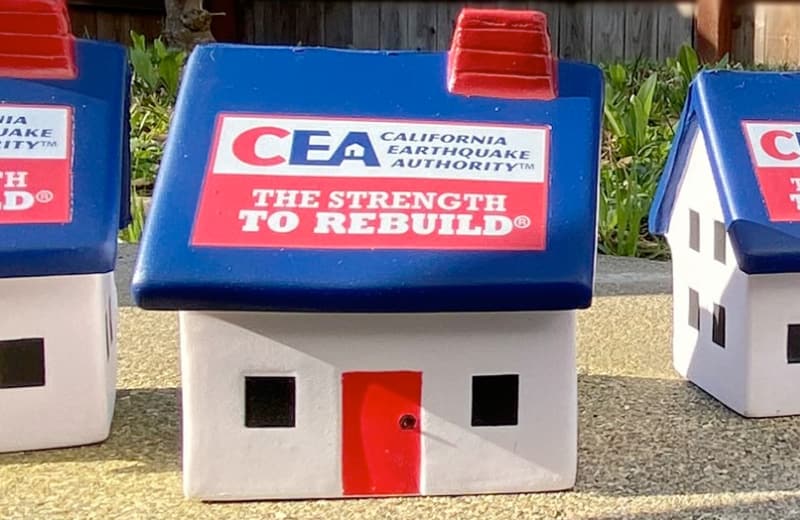 With now three catastrophe bonds sponsored so far in 2025, the California Earthquake Authority (CEA) has steadily increased the capital markets share of its overall reinsurance tower arrangements.
With now three catastrophe bonds sponsored so far in 2025, the California Earthquake Authority (CEA) has steadily increased the capital markets share of its overall reinsurance tower arrangements.